World 🢖 Europe 🢖 Netherlands
Churches 🢔 Religious architecture 🢔 Architectural wonders 🢔 Categories of wonders
Wonder
Chapel of St Nicholas – Sint Nicolaaskapel in Nijmegen
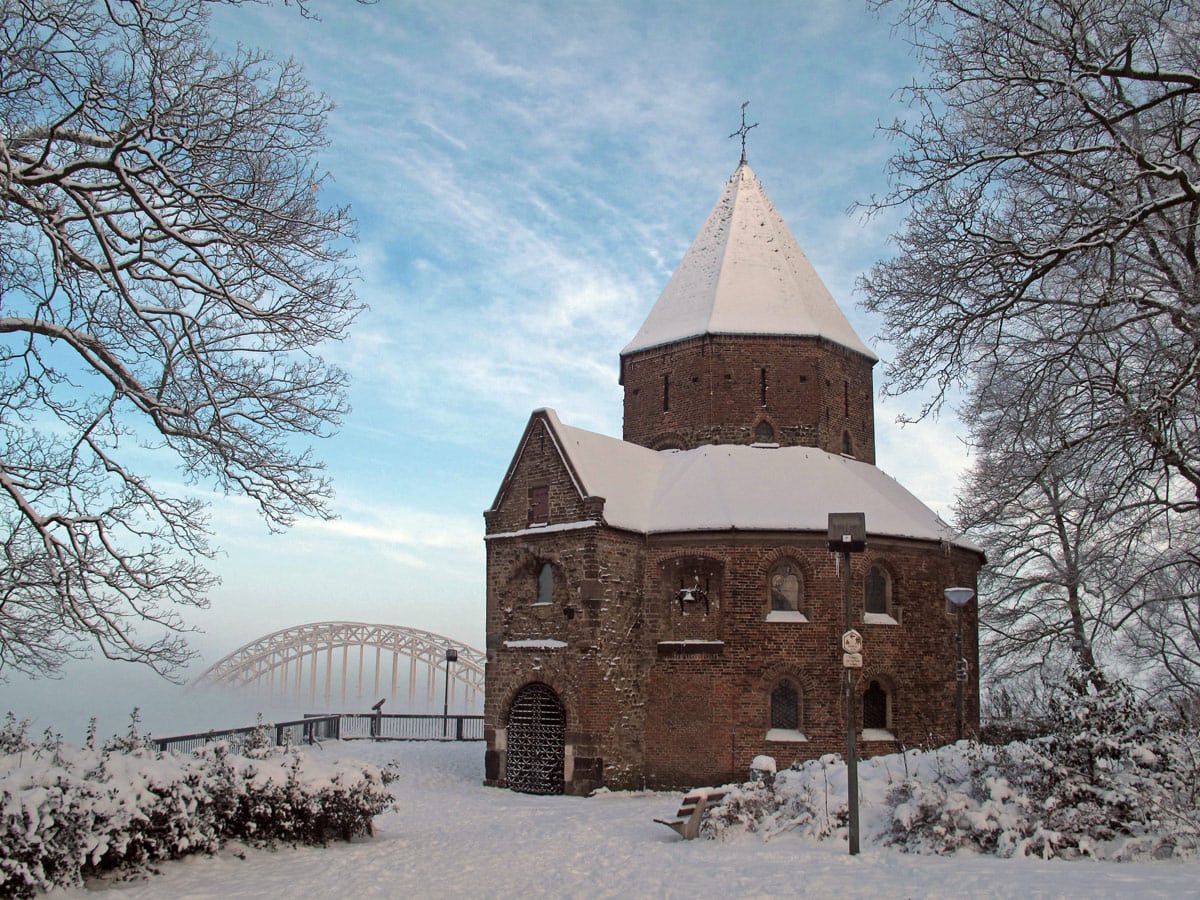
 In short
In short
The history of the Chapel of St Nicholas in Valkhof started at least one millenium ago. This is one of the oldest buildings in Netherlands.
 71.7%
71.7%
GPS coordinates
Location, address
Name in Dutch
Architectural style
Year of construction
Branch of Christianity
Map of the site
If you see this after your page is loaded completely, leafletJS files are missing.
 In detail
In detail
Ancient times
The castle mound at the bank of Vaal – the main distributary of Rhine before its inflow in the Northern Sea – has been used as a fortification for many centuries. In Roman times some two millennia ago there were living Batavi – former Germanic tribe, later – in the early 4th century it was fortified by Romans. This was a strategically important place – the border of the Roman Empire. A small part of Roman fortifications can be seen on the northern slope of Valkhof hill.
In the early 5th century the area around Nijmegen gradually was regained by Germanic people – Franks. Nijmegen and Valkhof mound was an important regional center. Step by step the Christianity arrived here.
Charlemagne and Valkhof castle
Charlemagne celebrated Easter in Nijmegen in 777 – he then ordered to build a palace in Valkhof. It is possible that by this time there was built also a chapel of the palace in the site of the present-day chapel of St. Nicholas – in the north-western corner of the castle.
The palace was gradually extended – after all Nijmegen remained an important regional center.
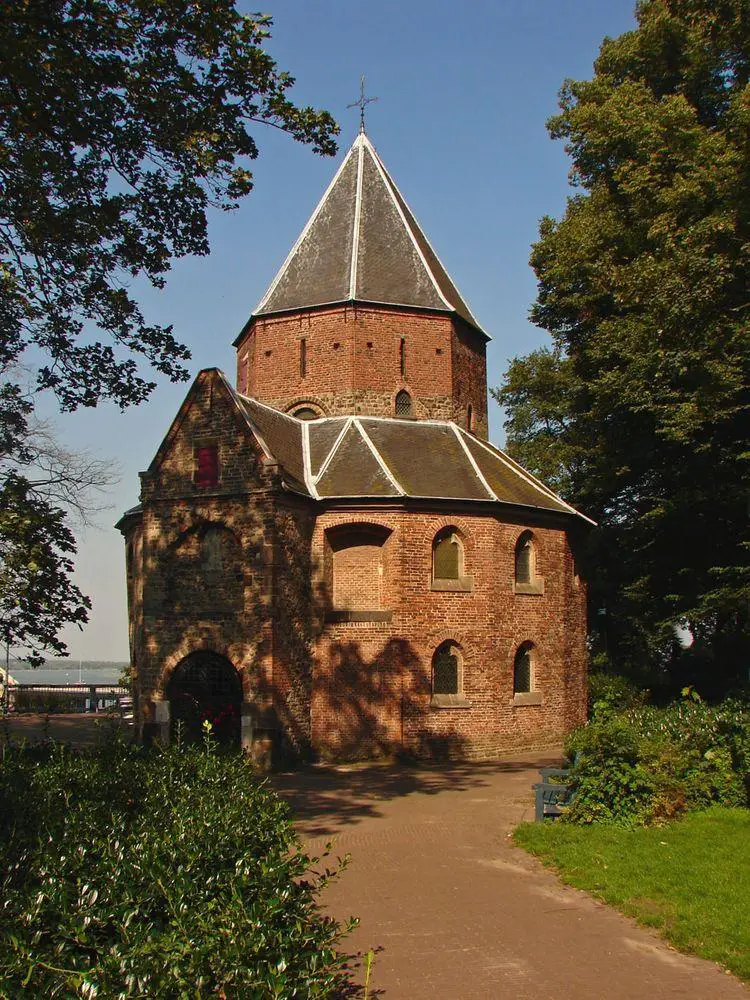
History of the current chapel
Emperor Conrad II ordered the construction of a new chapel in Valkhof in 1030. Following this order there was built an octagonal Romanesque chapel – it was built of tufa stone, using the older remnants of the Charlemagne chapel. Unfortunately, the whole complex of Valkhof palace burned down in 1047, during a popular uprising. Also, the chapel suffered – its upper part was destroyed.
The building stood unused for a century until Frederik Barbarossa ordered to rebuild the chapel in 1155. This was done, retaining the original form of the chapel.
At the end of the 14th century the chapel was partly destroyed again. Now it was rebuilt with new material – brick, it got some new architectural details – the central chapel was made higher and the gallery around the central hall got two floors.
Since then this structure has experienced few changes.
Nearby stand ruins of another part of the palace – so-called Barbarossa ruins from the 12th century. The palace was demolished in 1797, just keeping its oldest part – the chapel.
Romanesque architecture
This small chapel is one of the oldest buildings in the Netherlands. It seems that the oldest part above the ground level is the portal – it shows the influence of Carolingian architecture. Otherwise, the outer shell of the structure is newer, built in the times of Gothic architecture – but basically keeping the old Romanesque architecture.
The chapel consists of a taller central hall with a hexadecimal (with 16 edges) gallery around it. Gallery has two floors, each with round arches – a classical feature of Romanesque architecture.
Thanks to its similarity to Palatine Chapel in Aachen, until 1957 it was believed that the Chapel of St Nicholas was built in the 9th century – thus it seemed to be the oldest existing structure in the Netherlands by a wide margin.
Even now, when the building "became" for some centuries younger, it still is among the oldest structures in Netherlands.
The chapel still is in use by the Greek – Orthodox church, it is used also for exhibitions and occasionally – musical performances.
References
- Gemeente Nijmegen, monumentenregister van Nijmegen. Voerweg 1. Accessed on April 9, 2012.
- Nimwegen, Valkhofkapelle. Research project, led by B. Perlich, G. v. Tussenbroek, J. Cramer). Accessed on April 9, 2012.
 Linked articles
Linked articles
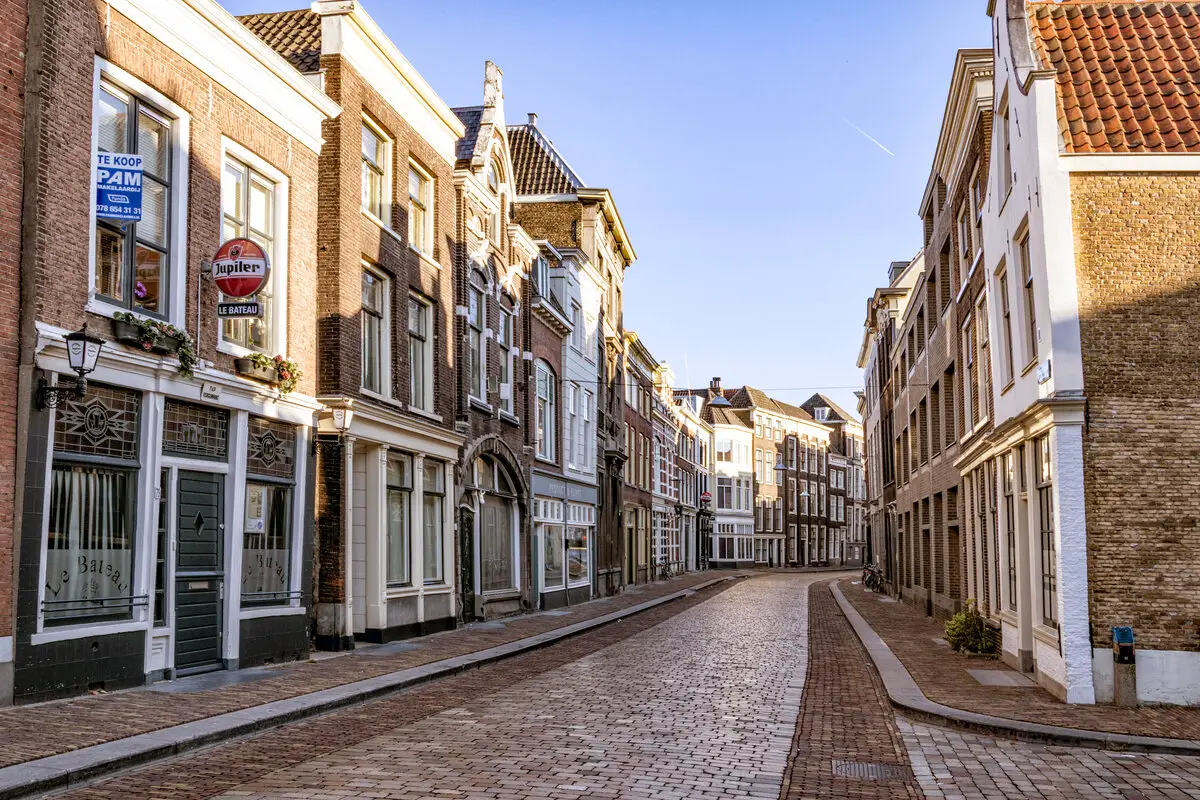
Wonders of Netherlands
Virtually all the landscape in the Netherlands is man-made, there are not located very special natural landmarks – and also archaeological heritage to large extent is erased with the later human activities. The most interesting landmarks of the Netherlands though belong to the realm of architecture and technology. Dutch did not spend too much effort to create sumptuous and egocentric structures – their specialty throughout the centuries is rationalistic, elegant, and homely architecture. Whenever humanity needs inspiration for democratic and humane design – Dutch can provide inspiration for it.
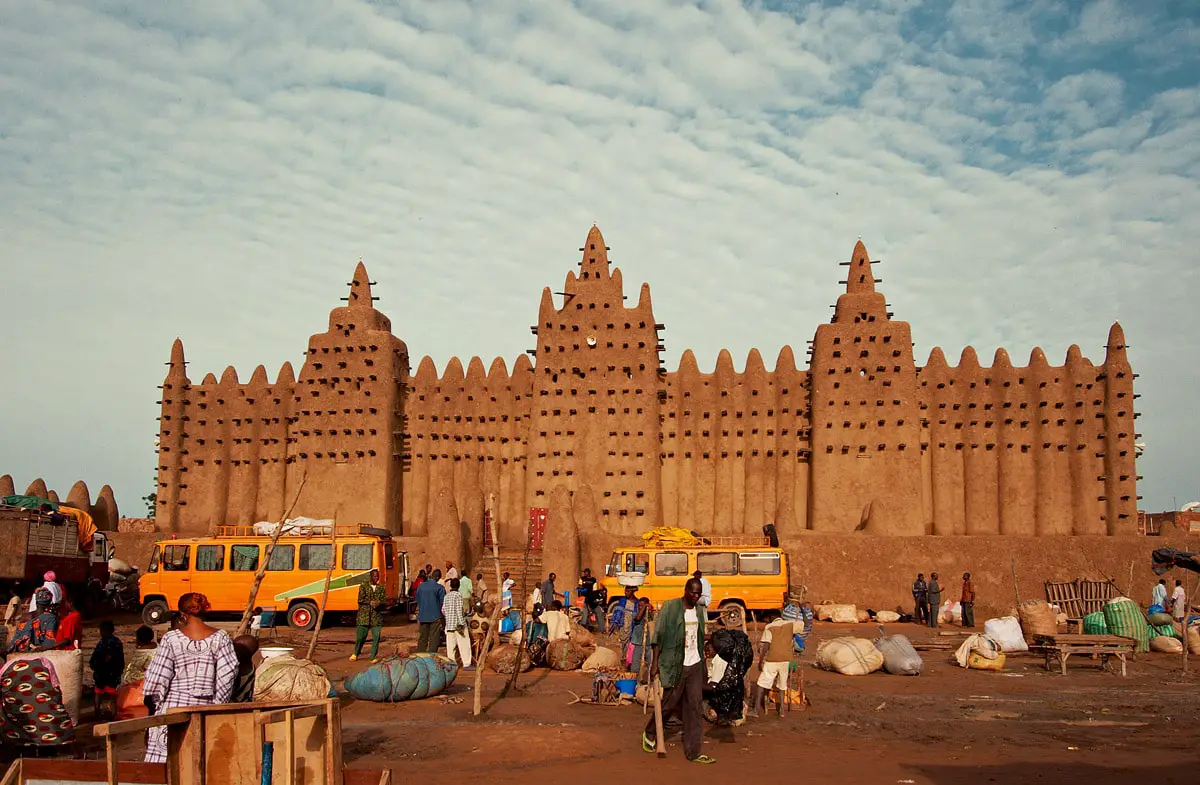
Religious architecture
Since ancient times human talents and skills have been expressed in religious architecture and arts, and traditions and rituals have evolved around pilgrimage sites. Religious buildings represent a major part of the highest achievements in architecture and crafts.
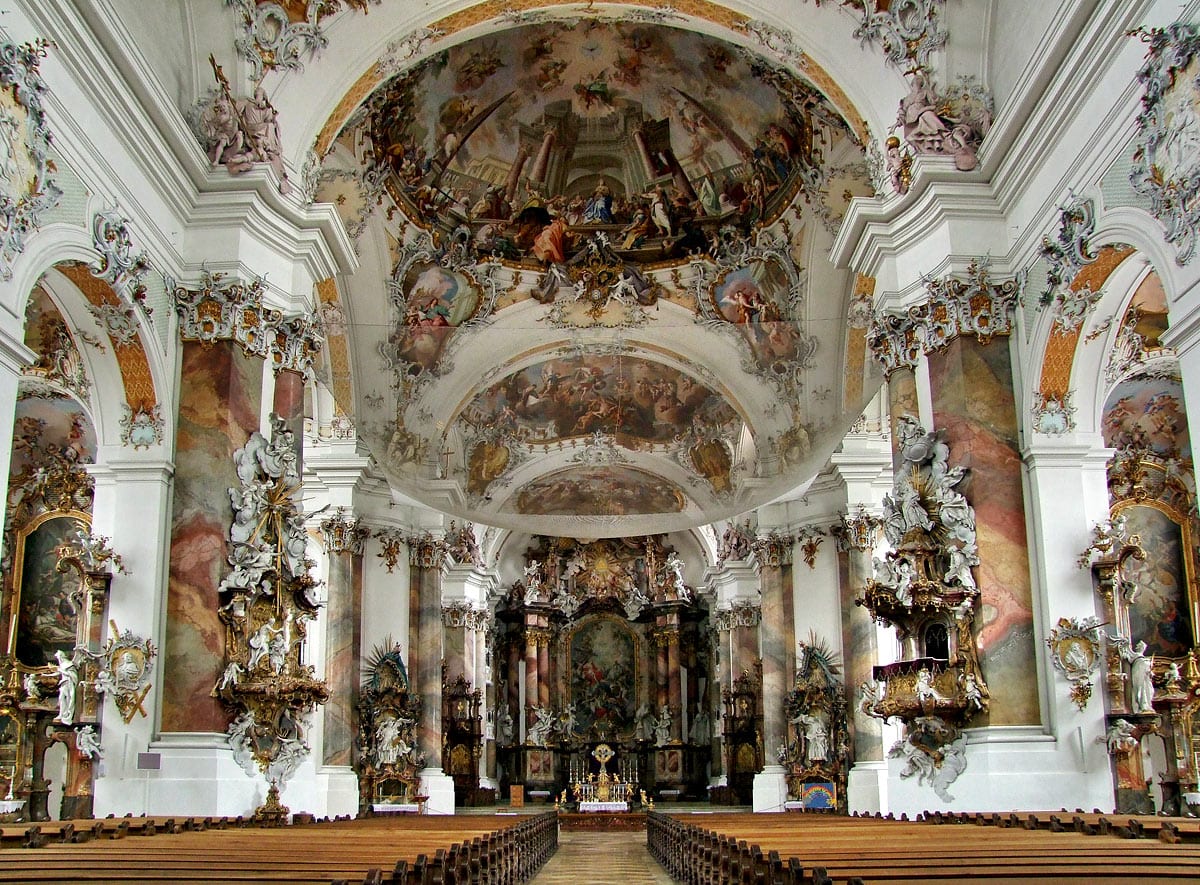
Churches
Throughout the millennia Christian churches have been the epitome of architecture and arts achievements in Western culture.
 Recommended books
Recommended books
Carolingian and Romanesque Architecture, 800-1200
Professor Conant’s detailed studies of Santiago de Compostela and of the abbey church at Cluny fit him for this account of building in the period of the round arch which preceded Gothic. In this volume, he shows how, at the instigation of the monasteries during the little renaissance of Charlemagne, Roman methods of construction were revived and fused with local traditions to produce a distinctive Carolingian manner.
The Carolingians : A Family Who Forged Europe
Pierre Riché traces the emergence of Europe from the seventh to the early eleventh century, the period that witnessed the rise, fall, and revival of the Carolinian Empire. It was during this time the first contours of a broad new civilization and the first visible signs of European unity are discernable.


